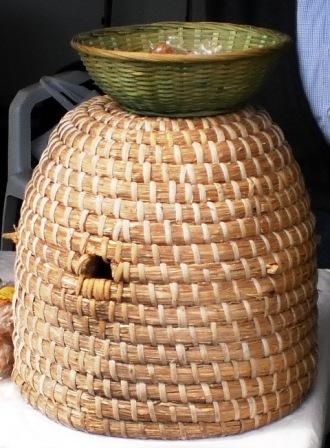The life of a bee colony
 Each colony has its own smell. Spread by the queen. Intruders are so instantly recognized and expelled. Bees swarm when there are too many bees born. The workers build some larger cells and feed some larvae with royal jelly. They so grow new queens. If the first queen is born, they immediately kill all the other unborn queen larvae. Then she threatens the old queen. That then leaves with about two-thirds of the colony. In anticipation of a new residence, they settle on a
Each colony has its own smell. Spread by the queen. Intruders are so instantly recognized and expelled. Bees swarm when there are too many bees born. The workers build some larger cells and feed some larvae with royal jelly. They so grow new queens. If the first queen is born, they immediately kill all the other unborn queen larvae. Then she threatens the old queen. That then leaves with about two-thirds of the colony. In anticipation of a new residence, they settle on a
tree, a hole in a wall, under a roof,... That bunch you can do fall with a jolt in a basket. He stays together better when you spray it slightly misty- wet. Allow the basket to rest, and just move it in the evening.
If you want to start a nuc (Nucleus colony, a new hive), you can move the box a little. The forager (or worker) bees can’t find the hive back and the queen thinks she has too few people to swarm out, so no new queens are bred. Put on the old place a new hive, the worker bees take the new hive and form a new colony.
To avoid swarms the hives must be checked regularly and cell caps where the new queens are in removed.
To find a colony of bees in nature Romans used the following trick: a hollow piece of reed was closed at one end. There were a few drops of honey in. This was put on a place where bees were drinking. Once a number of bees entered, one was freed. That was followed as far as possible on her way back to the nest. Then, a second was released, etc... until the nest was found.
Beekeepers use essential oils of lemongrass (Cymbopogon citratus) to lure swarms in lure beehives.
Real men do not eat honey. They chew bees.
